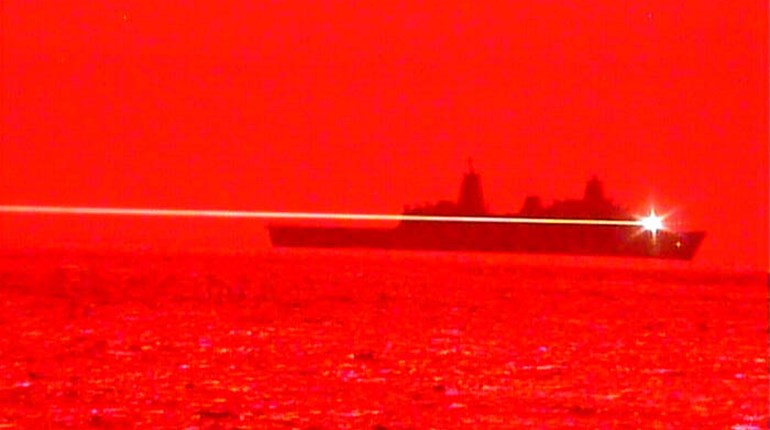
Describing the origins of the aircraft carrier as “modest” bespeaks a talent for understatement, and few vessels indeed could claim such modesty more easily than the likes of the USS Jupiter. While technically innovative—she was to be the first turbo-electrically powered ship—her station in the fleet was one of almost pre-ordained ignobility: When her keel was laid in 1911 at Mare Island shipyard in California, it was as a collier. Translated from the Navy-speak of the day, she was to cart coal the world over, and humbly feed the boilers of the emerging steel-hulled, heavily armored and long-gunned sovereigns of the seas—the mighty dreadnaughts.

Few naval architects, to say nothing of admirals, saw that the last generation of what we now call battleships was in view. Relative naval newcomers, the dreadnaughts would linger, and consequentially so, for another 80 years and even continue to improve. But for more than 300 years, the type had been the signal token not merely of naval might, but of world power. From Charles I’s Sovereign of the Seas (1610, 102 guns), Lord Nelson’s famed Victory (1765, 104 guns) and even the USS Constitution (while a “first-rate” when launched—and by such nomenclature a battleship in the jargon of the day—Constitution was only a heavy frigate by her gun count of 44), such sea-going artillery platforms were unmatched symbols of national pride and far-reaching influence. It would indeed have been a feat of imagination to predict that the relatively small, slow, crane-rigged Jupiter would bring low the likes of The “Mighty Mo” (USS Missouri), IJN Yamato or the Kriegsmarine Bismarck.
But Jupiter would, all the same. She did not meet a new destiny, however, for failing in her old. In 1914, she was the first vessel to transit the Panama Canal from west to east, and sailed widely in the Atlantic and Gulf of Mexico in support of the Atlantic Fleet Auxiliary Division prior to U.S. entry into World War I. In an odd foreshadowing of her eventual claim to fame, Langley transported her future executive officer Lt. Kenneth Whiting and a contingent of 128 other naval aviators to Europe in 1917. She saw out the war in collier duties, with her crews earning both Mexican Service and World War I victory decorations.

This considerable service reckoned without Samuel Pierpont Langley. A physicist and astronomer of considerable note, he is also an undeservedly forgotten aviation pioneer. His un-piloted, steam-powered Aerodrome No. 5 flew nearly eight years before the Wright Brothers. Perhaps the most crucial seed he planted in early aviation originated in a desire for soft landings, so nearly all his flight tests took place over water, thereby giving birth to the idea of over-water launch and recovery of aircraft.
Military interest in aviation in this period was very much a hot-and-cold affair, and Langley received at least one grant of $50,000 from the War Department to fund his research. He had no doubt about the long-term prospects of aviation, however, having told author Rudyard Kipling “though he would never live till then, he (Langley) should see the aeroplane established.”
Another major “push” for naval aviation came more boisterously—and famously—from an Army officer, Colonel, then Brigadier General, then again Col. William “Billy” Mitchell. Next to Capt. Eddie Rickenbacker, Mitchell was the best-known American military aviator, and had pioneered most every facet of early aerial warfare during World War I. He did considerable harm to his career in his outspoken, even pre-emptory assertions that no aspect of warfare would be unchanged by air power. As early as 1918, he said, “The day has passed when armies on the ground or navies on the sea can be the arbiter of a nation’s destiny in war … defense and the power of initiative against an enemy has passed to the air.” That Mitchell would be proven exhaustively correct was of little use at the time; he had few friends, and acquired many powerful enemies. (He was only restored to General Office rank posthumously.) By 1923, Langley was testing every aspect of the evolving sea-borne naval aviation mission.
In fairness, the U.S. Navy had not been idle in the post-war years irrespective of Mitchell’s rabble-rousing, but surface warfare by battleships a la the Battle of Jutland (1916) still dominated strategy, tactics, procurement and, therefore, budgets. Even in this skeptical climate, naval aviation proponents won a refit for Jupiter, and her conversion to a test bed for sea-borne aviation began in April 1920.
Billy Mitchell would make them very glad they had in the summer of 1921. Over July 20-21, and amidst a thicket of absurd rules, Mitchell’s pilots used aerial bombs to sink the captured German battleship Ostfriesland, a feat he repeated in 1921 against the pre-dreadnought USS Alabama in September, and against the decommissioned Virginia and New Jersey in 1923.
By the autumn of 1922, Samuel Langley’s deserved namesake was back to work, and not just with flight deck-related experimentation, but also in saving the Navy additional public castigation in the wake, so to speak, of Mitchell’s success. Oct. 17 would see Lt. Virgil Griffin make the first departure from her wooden flight deck, and LCDR Godfrey de Courcelles Chevalier would make the first underway landing nine days later. In November, Langley Executive Officer Whiting would take the historic first “cat” shot (another Langley innovation). Ironically, aircraft carriers would do very few of the iconic launches for many years to come (even dispensing with catapults for a time), though the practice would be commonplace for battleships and cruisers to launch their float-equipped scouts.

By 1923, Langley was testing every aspect of the evolving sea-borne naval aviation mission. In 1924, she participated in numerous exercises and demonstrations, including one at Washington, D.C. In the Norfolk yard over the summer, she was refit to take advantage of many “lessons learned.”
Her successors—CV-2 and CV-3 (the Lexington class, consisting of the “Lady Lex” and Saratoga)—were to be vastly larger (35 percent longer, more than twice the displacement) and more capable vessels (more than twice as fast, more than twice the aircraft, nearly six times the crew complement) and now well under way. Also like Langley, they had been repurposed: Originally laid down as battlecruisers in 1916, the Langley experience and Billy Mitchell’s humbling display had taken root. A powerful air arm for the U.S. Navy was now inexorable.
The Navy was far from done with Langley too. The Lexington and Saratoga took over the bulk of carrier duty and doctrine development by the late 1920s. In 1936, the Navy sent Langley back to Mare Island, where she was refit as a seaplane tender and took on a very rare third hull number: AV-3, and the momentous events of December 1941 found herin the Philippines.An inglorious fate, perhaps, but far from an inglorious legacy.
An odd paradox ends the Langley story. In an important sense, she secured her place in history through the pro-air power machinations of an Army officer—Billy Mitchell (who had died scant months before her conversion to tender). In February of 1942, she would also meet her end in the service, arguably, of the U.S. Army. Just short of her goal at Tjilatjap, Java, and while carrying 32 crated-up P-40 fighters destined for Army Air Corps service there, Japanese bombers caught her convoy. Langley avoided the bombs sent her way in the first two runs, but on the third she sustained five or six hits. Badly aflame and listing to port, the order to abandon her was given. She was shelled and torpedoed by her escorts to avoid capture, and sank.
An inglorious fate, perhaps, but far from an inglorious legacy. As 1942’s May Battle of the Coral Sea and June Battle for Midway would prove, the aircraft carrier tactics and technologies Langley pioneered would not merely supplant the mighty battleship, but go a very long way to ending the world war that claimed her.


































